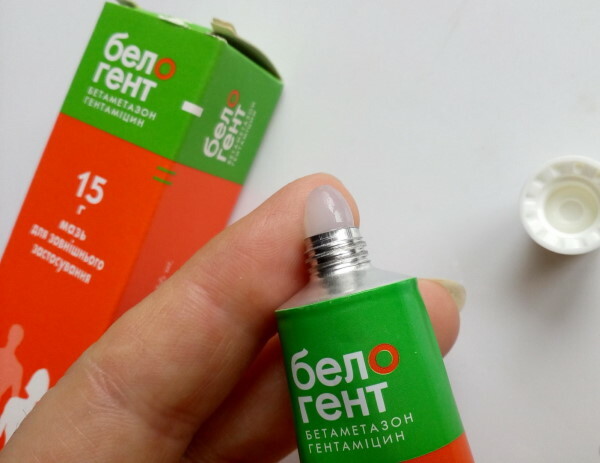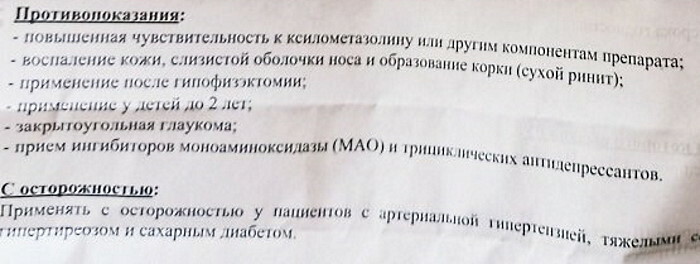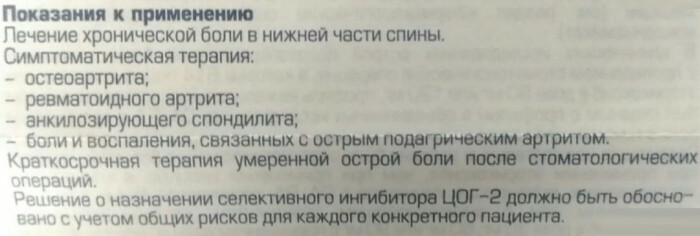Content
- Purpose of turunda for the ears
- Indications for use
- How to make turundas in the ear correctly
- Cotton wool
- From a cotton pad
- From gauze or bandage
- How to insert a turunda into your ear
- Features and precautions when using turunda
- Medicinal formulations for impregnating turunda, how much to keep in the ears
- Alcohol impregnation
- With ointment
- With boric alcohol
- With ear drops, solutions
- The best remedies for treating ear diseases with turunda
- Medications
- Tetracycline ointment
- Vishnevsky ointment
- Clotrimazole
- Folk remedies
- Aloe juice
- Chamomile decoction
- Propolis solution
- Signs of drug intolerance, when you need to urgently pull out turundas
- Video about turunda in the ear
Turunda in otolaryngology - This is a remedy for the treatment of inflammatory diseases of the inner ear, sanitation for purulent-infectious processes that develop directly in the ear canal. According to its external characteristics, this element of ENT therapy resembles an oblong tampon formed from cotton wool or dense gauze tissue. Turunda can be done independently, being at home, or you can seek medical help from a qualified otolaryngologist.
Purpose of turunda for the ears
Turundas for the treatment of ear diseases are made only from sterile consumables with strict adherence to all antiseptic standards.
This element of otolaryngological therapy has the following purpose:
- cleansing the ear canal from serous and purulent exudate, which has accumulated due to an acute or chronic disease;
- removal of an excess amount of sulfur masses (for example, if a person has ignored the rules of personal hygiene for a long period of time);
- absorption of ichor, which is secreted by tissues in the depths of the ear canal;
- elimination of signs of an inflammatory process of an infectious or colds nature of origin (use turunda is equally effective in the treatment of pathologies caused by bacterial, viral and fungal microorganisms);
- removal of signs of puffiness and restoration of the normal lumen inside the auditory canal.
The decision to use turunda in the therapeutic process is taken by the otolaryngologist with the permission of the patient. The therapeutic effect of the use of cotton or gauze tampons is possible only if an antiseptic or anti-inflammatory agent is applied to their surface. The type of medication with which the turunda is impregnated is selected individually, depending on the pathology of the inner ear and the auditory canal.
Indications for use
Turunda in the ear (you can make a therapeutic agent from sterile cotton wool, which is used during surgical operations) indicated for use in the presence of the following diseases:
- otitis media, accompanied by acute or chronic inflammation of the inner ear (this pathology can have an infectious or cold etiology);
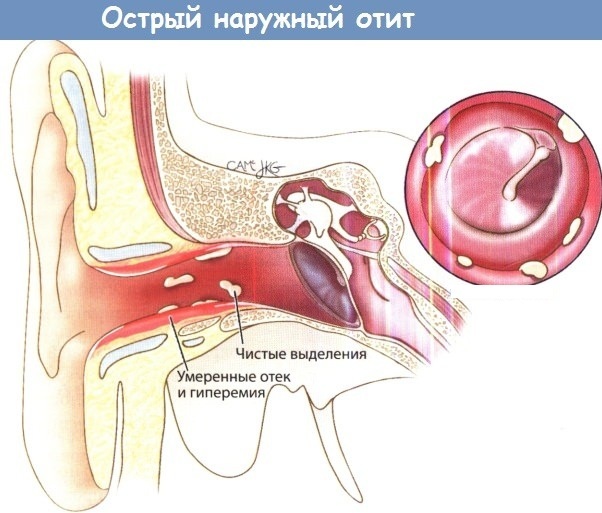
- Meniere's disease, in which serous fluid begins to accumulate inside the organ of hearing, local blood circulation is disturbed;
- eustachitis, in which the walls of the auditory canal are damaged (in 90% of cases, this pathology is caused by bacterial and fungal microorganisms);
- complications caused by traumatic brain injury or previous surgery.
Treatment of the organ of hearing using turunda is indicated for use in adults, children and elderly patients. The advantage of this therapeutic method is that with the help of cotton or gauze tampons, the drug can be delivered directly to the focus of the pathological process.
How to make turundas in the ear correctly
Turunda in the ear (you can make a remedy immediately before starting treatment) is formed from sterile medical cotton wool, gauze bandage or cotton pads.
Cotton wool
To make a cotton wool turunda, you must follow the following sequence of actions:
- Take a small piece of cotton wool that is completely sterile.
- Stretch and fluff the consumable thoroughly.
- Using your thumb, forefinger and middle finger, start rolling the cotton wool from the center towards the edges.
- These manipulations are performed until an oblong flagellum 12 cm long with a diameter of about 2 mm is formed.
- The resulting cotton swab must be folded in half by bending it in the center.
- The edges of the cotton swab are twisted together to form a dense turunda with a homogeneous structure.

It must be remembered that the finished cotton roll should not be more than 5 mm thick. Otherwise, its introduction into the cavity of the auditory canal will become problematic. In the presence of acute inflammation, too much turunda will cause uncomfortable and painful sensations.
From a cotton pad
Cotton pads used to form turundas must also be completely sterile.
The manufacturing process for this product is as follows:
- You need to take 1 cotton pad.
- With the help of scissors, this consumable is cut into 2 even parts.
- Each separate half of a cotton pad is rolled with fingers into an oblong-shaped tampon.
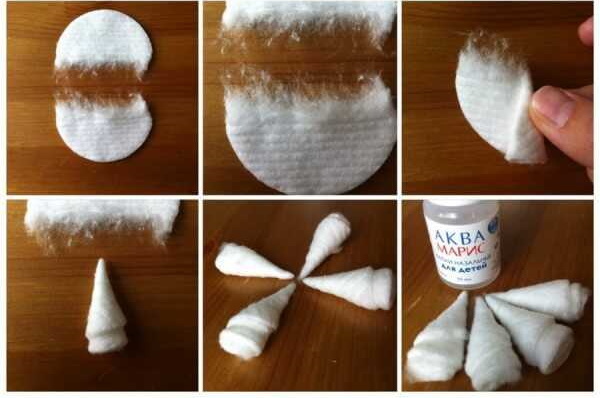
Turundas are considered ready for use when their diameter is 2-3 mm, but not more than 5 mm. Making these products using cotton pads is considered more convenient, and ready-made tampons have a softer and smoother surface.
From gauze or bandage
To make a turunda from gauze, you must use only a sterile bandage made of high-quality material.
The process of forming this therapeutic agent is as follows:
- Using scissors, cut off a piece of gauze bandage 1 cm wide and 15 cm long.
- Fold the 2 edges of the gauze inward.
- Cut off the threads hanging along the edges of the future turunda.
- The resulting strip should be rolled up with fingers until a thin flagellum with a diameter of 2-3 mm is formed.

- The average length of a finished turunda made of gauze bandage is 6 cm. If, after the manufacture of this product, threads hang along its edges, then such a roller cannot be used. This warning is due to the fact that a piece of tissue accidentally left inside the ear canal can cause even more acute inflammation.
How to insert a turunda into your ear
In the process of introducing turunda into the ear canals, the following rules must be observed:
- Make sure the finished cotton or gauze swab is completely smooth.
- Moisten the roller in a medicated solution or apply an ointment to it.
- Slowly, without sudden movements, insert the turunda into the cavity of the ear canal to a depth of 3-4 cm.
- Leave the edge of the roller sticking out of the auricle for quick and safe removal.
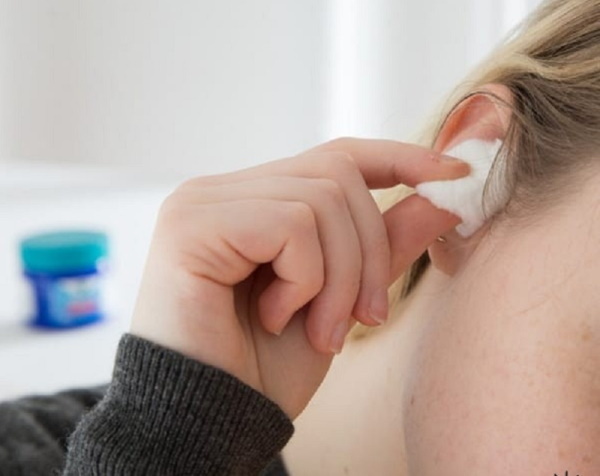 After performing the above manipulations, you should fix the installation time of the turunda. This is necessary in order not to irritate the walls of the auditory canal by the constituent substances of drugs. At the end of the therapeutic process, the turunda is carefully removed from the ear and then disposed of.
After performing the above manipulations, you should fix the installation time of the turunda. This is necessary in order not to irritate the walls of the auditory canal by the constituent substances of drugs. At the end of the therapeutic process, the turunda is carefully removed from the ear and then disposed of.
Features and precautions when using turunda
During the treatment of otitis media and other pathological conditions of the organ of hearing, it is recommended to observe the following precautions:
- Do not push the cotton swab into the ear canal.
- Always bring the edge of the roller outside the limits of the ear.
- Do not use this therapy without preliminary examination and consultation with an otolaryngologist.
- In the process of using anti-inflammatory and antiseptic solutions, always observe the prescribed dosage regimen.
- In case of reddening of the tissues of the auricle, itching, the appearance of a red rash, urticaria, it is necessary to immediately remove the turundas from the ears.
- Do not use gauze pads, the edges of which are tousled, there are signs of hanging threads.
- Turunda should not come into contact with the surface of the tympanic membrane, as this can lead to its damage or the development of a secondary inflammatory process.
Patients who treat otitis media and other ear diseases using turunda should monitor their general well-being. In the absence of a therapeutic effect or progression of the disease, you should immediately contact your doctor.
Medicinal formulations for impregnating turunda, how much to keep in the ears
Turunda in the ear (you can make a cotton roll yourself in 5-10 minutes) is introduced after it is moistened with an antiseptic, anti-inflammatory solution, or a wound-healing agent will be applied to its surface ointment.
Alcohol impregnation
The use of alcohol impregnation allows for antiseptic treatment of the ear canal, as well as improve local blood circulation. It will take 1 tsp to prepare this product. l. ethyl alcohol and 3 tbsp. l. warm boiled water, the temperature of which is 40 degrees Celsius. These components are mixed in a small container.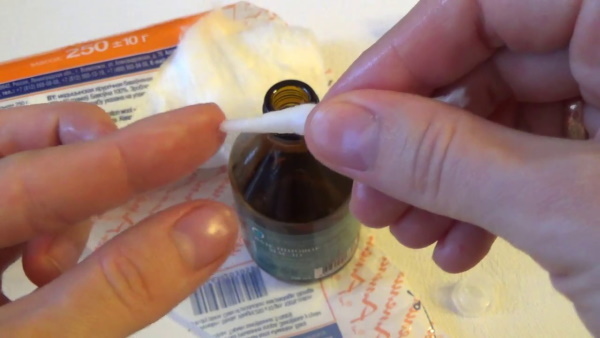
Turunda is impregnated in the resulting solution. A moistened cotton or gauze swab is wrung out so that a minimum amount of moisture remains in its tissue. Alcohol-impregnated turunda is injected into the ear canal for 10 minutes. In this case, a therapeutic effect is achieved, as with a conventional compress. Antiseptic tissue treatment is performed, the inflammatory process is stopped.
With ointment
For ear treatment using turunda, Boric ointment with an active substance concentration of 5% is best suited. The active ingredient of this drug is boric acid at a dosage of 50 mg per 1 g of medication. A small amount of this ointment is applied to the surface of a cotton or gauze turunda, which corresponds to the size of a pea.
The tampon is slowly inserted into the ear canal. The duration of the therapeutic process, during which the turunda will be in the ear, should be determined by the doctor, but on average, 15 minutes is enough. The use of Boric ointment is contraindicated in patients under 18 years of age. The average cost of this drug is from 28 to 42 rubles. per tube 25 g.
With boric alcohol
The use of boric alcohol as an impregnation for turunda is one of the most effective ways to quickly treat inflammatory processes in the inner ear and auditory canal.
To use the method, the following sequence of actions must be observed:
- Take prepared turundas.
- Soak gauze or cotton swabs in boric alcohol.
- Squeeze out the excess amount of the drug from the turunda.
- Gently insert the tampon into the ear canal.
Boric alcohol impregnated turundas are best used in the evening before bedtime. You can leave cotton swabs with this product in your ears overnight.
In the morning, the turundas are removed from the organ of hearing, and then thrown into the trash. In most cases, 3 to 5 treatment procedures are sufficient to achieve a positive therapeutic effect.
With ear drops, solutions
For the treatment of ear diseases, boric alcohol is used as an antiseptic and anti-inflammatory solution.
In this case, the following procedure is followed:
- Boric alcohol is poured into a teaspoon and then heated over a fire to a temperature of 36-40 degrees Celsius.
- A warm preparation is instilled into each auditory canal, adhering to the dosage - 3 drops in each ear 3 to 4 times a day. During this treatment procedure, the patient should be in the supine position.
- After instillation of boric alcohol, a clean sterile turunda is introduced into the cavity of the auditory canal.
- After 15 minutes. cotton swabs can be removed from the ears.
The average duration of treatment with boric alcohol is 7 days. The cost of this drug is from 15 rubles.
The best remedies for treating ear diseases with turunda
A turunda in the ear (you can make a roller with a small piece of gauze bandage) is inserted after a preliminary impregnation with antiseptic, anti-inflammatory and wound healing medication, or a folk remedy treatment.
Medications
Before using drugs as a therapeutic basis for impregnating turunda, it is necessary to establish the cause of the pathological state of the hearing organ. With the help of cotton and gauze rollers, anti-inflammatory, antibacterial and antifungal agents are injected into the ear cavity, depending on the etiology of the disease.
Tetracycline ointment
Initially, the drug Tetracycline ointment was created for the treatment of ophthalmic diseases, but also found wide application in otolaryngology. This medication is applied to the surface of the turunda (a pea-sized amount of ointment). A cotton swab is inserted into the cavity of the auditory canal for 2-3 hours, and then removed.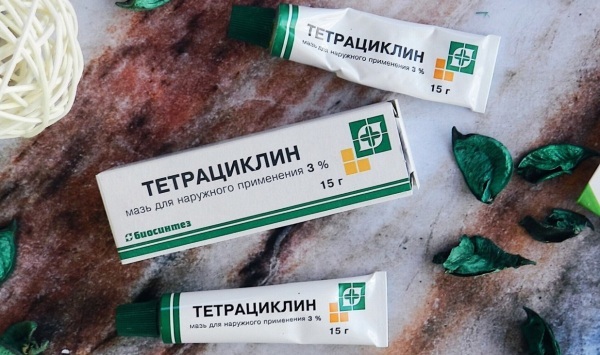
Tetracycline ointment is a broad-spectrum antibiotic that treats inflammatory diseases of the inner ear caused by a bacterial infection. This remedy is contraindicated for use in children under 8 years of age. The average cost of the drug is from 39 to 46 rubles. per tube 3 g.
Vishnevsky ointment
This medication is distinguished by high therapeutic efficiency in terms of removing purulent exudate from inflamed tissues, and also contributes to their faster regeneration. Vishnevsky's ointment is applied to the surface of the turunda with a uniform distribution of the drug throughout the flagellum. A cotton swab is inserted into the cavity of 1 or 2 ear canals at once.
The duration of the presence of the turunda inside the ear should be determined by the otolaryngologist, since it all depends on the severity of the inflammation and the amount of purulent exudate. The average cost of this drug is from 28 rubles. per tube 30 g.
Clotrimazole
Clotrimazole in the form of a topical solution can be used to treat inflammatory ear infections caused by fungal infections. The active ingredient of this drug is the antimycotic substance clotrimazole at a dosage of 10 mg per 1 ml.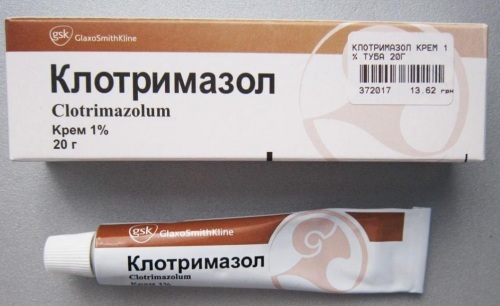
The prepared turunda is abundantly moistened in an antiseptic solution, and then gently inserted into the cavity of the auditory canal. Before using this medication, you should consult your doctor. Initially, Clotrimazole solution was created for external application, but in medical practice it is used to treat ear diseases.
Folk remedies
Traditional medicine offers alternative methods of therapy for otitis media and other ear diseases using turunda.
Aloe juice
The use of aloe juice allows you to relieve acute and chronic inflammation in the ear canal, remove purulent exudate, and perform antiseptic treatment of damaged tissues.
To apply this folk method, the following algorithm of actions must be observed:
- Take 1 leaf of aloe flower.
- Vegetable raw materials are washed under a stream of cold water, and then crushed to a state of gruel.
- The pulp of the aloe leaf is squeezed out through a gauze cloth.
- In the resulting juice, cotton turunda is thoroughly moistened.
- The therapy roller is gently inserted into the ear canal.
Cotton turunda dipped in aloe juice should be in the sore ear for 3 to 5 hours. After the specified time has elapsed, the flagellum is removed from the organ of hearing. The treatment procedure is performed 1-2 times a day, depending on the severity of the inflammatory process. The duration of therapy is from 5 to 10 days.
Chamomile decoction
A decoction of chamomile is applied to the surface of a cotton or gauze turunda to relieve inflammation and eliminate tissue edema.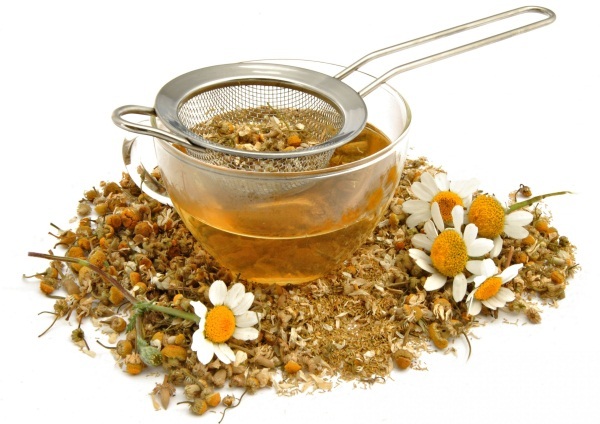
The preparation of this medicine is as follows:
- Take 2 tbsp. l. dried chamomile.
- Pour 300 ml of water over the medicinal plant.
- Bring the liquid to a boil.
- After 5 minutes. set aside from the stove to cool.
- After 2 hours, the chamomile decoction is ready for use.
In the finished medicinal product of herbal origin, a pre-formed turunda is moistened, and then it is introduced into the cavity of the auditory canal with signs of the disease. Inside the focus of the pathological process, the cotton roll should be at least 2 hours. the treatment procedure is repeated 2-3 times a day for 7-10 days.
Propolis solution
Propolis alcohol solution has antimicrobial, regenerating and anti-inflammatory properties. This folk remedy has a powerful disinfecting effect.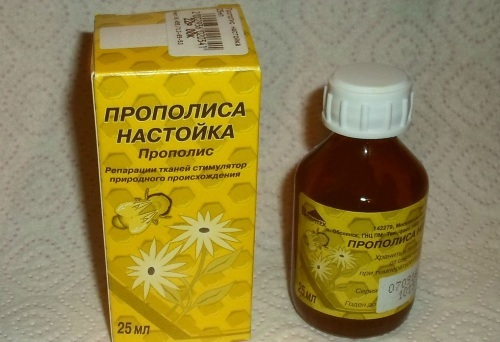
To apply it on ear turundas, the following procedure must be followed:
- Mix 1 tsp. l. alcohol tincture of propolis with 2 tsp. l. chilled boiled water.
- Moisten sterile cotton or gauze turundas in the resulting solution.
- Insert the therapeutic flagellum into the ear canal cavity.
- Antiseptic turunda should be in the area of the inflammatory process for 1-2 hours.
This treatment procedure is performed 1-2 times a day. The average duration of the therapeutic process is 5 to 8 days. You can not use a pure alcohol solution of propolis, as its too high concentration can cause burns to the walls of the ear canal.
Signs of drug intolerance, when you need to urgently pull out turundas
The table below lists the main symptoms of individual intolerance to drugs applied to turundas.
| Signs of hypersensitivity | First Aid Actions |
|
These symptoms indicate an allergic reaction of the body to the drug, which is impregnated with turunda. In such a situation, the patient needs to do the following: 1. Pull the turunda out of the ear immediately. 2. Gently rinse the auricle and ear canal with a stream of warm water to remove any medication residues. 3. Wipe the organ of hearing dry. 4. Take 1-2 tablets of the antihistamine Aleron, Loratadin or Cetrin. 5. Seek medical attention from a medical institution. In the future, it is strictly forbidden to treat ear diseases with the use of a medication, to the action of which an acute allergic reaction has arisen. |
Turundas in the treatment of ear diseases are an effective therapy that is easy to do on your own at home. Sterile cotton wool or dense gauze cloth is used as consumables. Treatment is carried out by an otolaryngologist with periodic scheduled diagnostic examinations.
Turundas are indicated for use by patients diagnosed with acute or chronic inflammation in the structure of the inner ear, serous exudate accumulates, there are signs of postoperative complications. An ointment, anti-inflammatory or antiseptic solution is applied to the surface of cotton or gauze tampons. Each turunda is inserted as deep as possible inside the auditory canal, but so that its edge protrudes 1 cm beyond the limits of the organ of hearing.
Video about turunda in the ear
How to make turundas at home:

